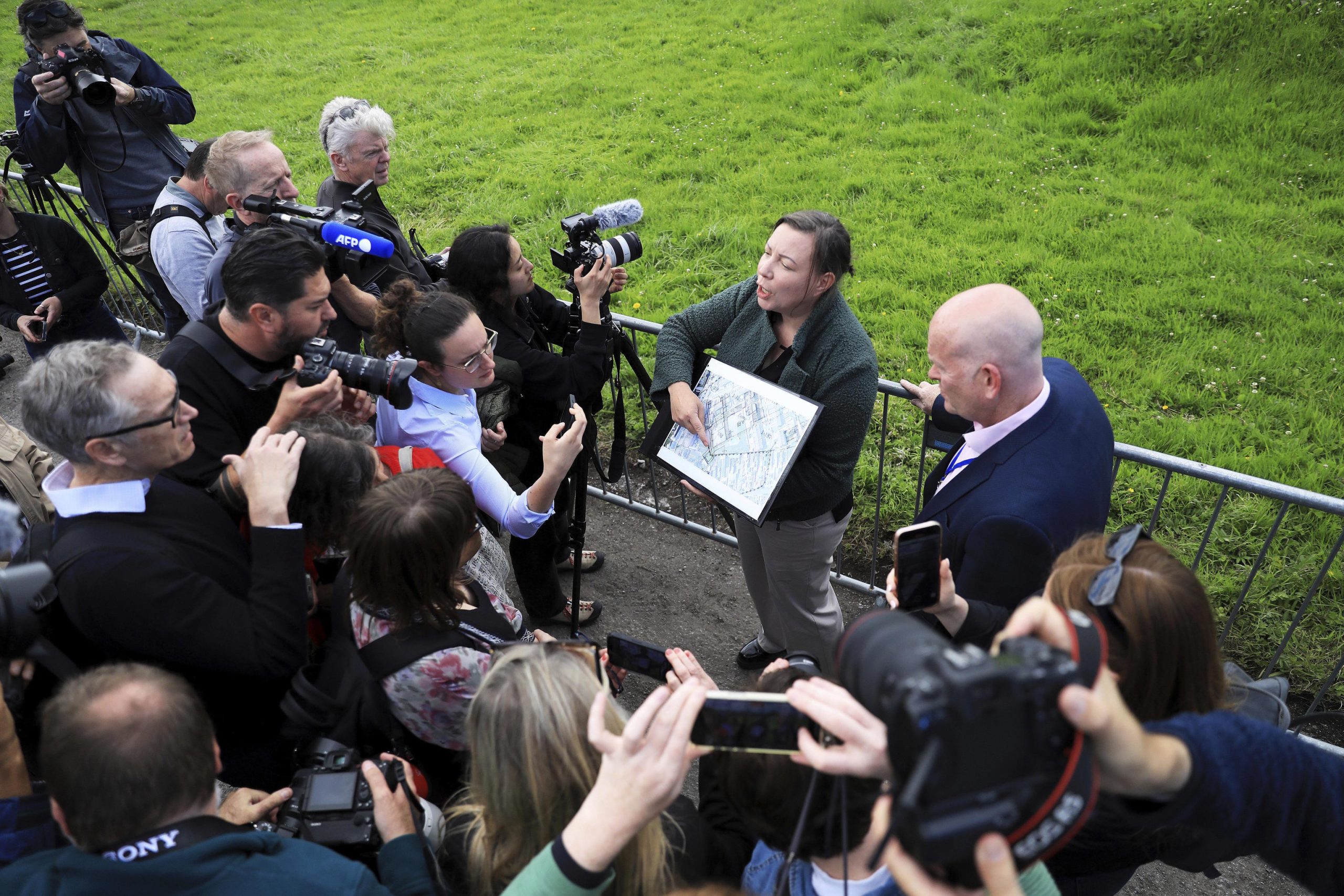The Discovery That Changed Everything
In 2005, Catherine Corless enrolled in a local history night course in Tuam, County Galway, Ireland, expecting it to be an easy and straightforward endeavor. She was interested in family history and curious about the origins of the old buildings scattered around her hometown. However, what began as a simple interest soon transformed into a life-changing journey that would uncover one of the darkest chapters in Irish history.
Corless, a former textile factory secretary, had no idea that this decision would lead her to become the conscience of Ireland. Her research eventually revealed that the remains of 796 children and babies who died at St Mary’s Mother and Baby Home, run by the Sisters of the Bon Secours between 1925 and 1961, were buried in an old septic tank. Now, the exhumation of these remains has begun, marking a significant step toward justice and recognition for those who were forgotten.
A Life Shaped by Curiosity
Although Corless claims she knew nothing about the so-called “mother and baby homes” as a child, she was aware of the societal hierarchy in Tuam that separated “legitimate” from “illegitimate” children. These children, born out of wedlock, were often placed in institutions run by religious orders, where they lived in isolation from the society that rejected them. The legal distinction between these children and others did not change until 1987.
Corless recalls memories of the children who were brought to her class, described as “emaciated and sad,” who always arrived later and left before the others. The nuns warned the students not to mix with them, claiming they had a contagious disease. These children were quickly forgotten, their existence erased from public memory.
A Question That Would Not Go Away
It wasn’t until 2012, when a local history magazine asked her to write an essay, that Corless felt compelled to revisit these memories. For reasons she couldn’t explain, she wondered, “Why?” This question led her on a long and difficult journey of discovery.
Through conversations with the elders of the town, she learned about St Mary’s Mother and Baby Home. Later, she discovered that in 1975, two children had found human remains in a nearby septic tank while searching for apples. This revelation prompted her to request the list of all those who had died there from the civil registry. It took the intervention of a deputy for her to access the records from Galway City Hall.
With maps and limited documents, Corless uncovered a pattern of high mortality rates among the children at the home. Her research eventually led her to the possibility of a mass grave in the area. By 2014, she had documented the deaths of 796 children, though she could only find death certificates for two of them.
Facing Opposition and Doubt
Despite her findings, the Church denied knowledge of the burials, and the Sisters of the Bon Secours hired a public relations agency to refute the existence of a mass grave, claiming the bones were from the famine. Corless’s research was publicly ridiculed, and for eight months, her work went unnoticed.
The story gained attention only after a relative of one of the deceased children, alerted through social media, spoke to a journalist in Dublin. The scandal of babies’ bodies buried in a septic tank made headlines worldwide, forcing the government to establish a commission to investigate the issue. In a preliminary conclusion three years ago, the commission sided with Corless, confirming the presence of significant quantities of human remains at the Tuam site.
A Long Road to Justice
Corless’s discovery did not receive much support from the local community. Many businesses and people in authority wanted to keep the issue quiet, preferring to erect a monument without acknowledging the number of lives lost. They downplayed the situation, urging her to let the past remain buried.
However, the treatment of the children and the lack of dignity in their burials were too disturbing to ignore. Following the 2021 publication of the government report on mother and baby homes, all involved institutions apologized and promised to excavate the Tuam site. It took another year for a law to be passed allowing the exhumation and forensic analysis of the remains.
Restoring Dignity in Death
Now, under the protection of over two-meter fences, a team led by Daniel MacSweeney, a former special envoy of the International Committee of the Red Cross, is working to recover the remains and restore dignity to those who were forgotten. The operation aims to identify the remains, deliver them to families, and arrange for their reburial.
Over 80 people have come forward to provide DNA samples, hoping to locate the bodies of their relatives. For Corless, this moment is a victory after enduring ridicule for over a decade. As she looks through a small hole in the fence, she feels a sense of joy, knowing that the 796 babies are finally being given the chance for a dignified burial.







